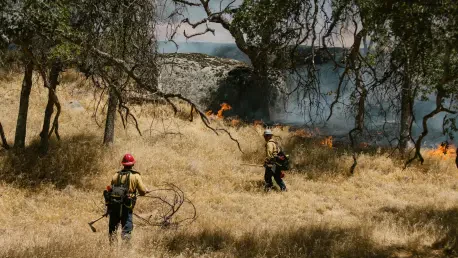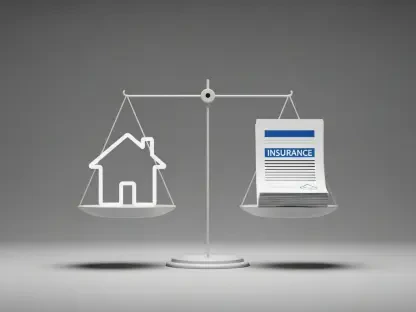Introduction
The escalating wildfire crisis in California, particularly in Los Angeles, has raised a critical question about the delayed implementation of protective regulations, especially the establishment of ember-resistant areas known as “Zone Zero.” These delays have proven costly, with recent fires destroying thousands of homes and claiming numerous lives, highlighting an urgent need for effective policy measures. As climate change intensifies the frequency and severity of wildfires, understanding the timeline of events and decisions that have stalled these vital rules becomes essential to prevent further devastation. This article traces the chronology of key moments in the struggle to enact Zone Zero regulations, shedding light on legislative, political, and societal barriers that have persisted even as the threat of urban firestorms grows.
A Timeline of Delays in Wildfire Protection Rules
1961 – The Bel Air Wildfire: Early Warnings Ignored
In 1961, the Bel Air wildfire struck an affluent Los Angeles neighborhood, destroying over 400 homes and exposing the vulnerability of urban areas to ember-driven fires. This disaster marked one of the first major urban firestorms in California, revealing how embers could ignite structures far from the main fire front. Despite sparking early discussions on fire-resistant building codes, the concept of creating protective zones around homes remained unexplored. The lack of systemic change following this event established a pattern of reactive rather than proactive policymaking, a trend that would hinder progress for decades.
1991 – Oakland-Berkeley Hills Firestorm: A Grim Reminder
The 1991 Oakland-Berkeley Hills firestorm proved even more deadly, claiming 25 lives and destroying nearly 3,000 homes. Post-fire analyses pinpointed combustible materials near homes, such as wood fences and vegetation, as key factors in the rapid spread of fire through embers. While this tragedy prompted some advancements in building codes, the focus remained on the structures themselves rather than their immediate surroundings. The notion of defensible space, later conceptualized as Zone Zero, began to surface among fire scientists, but it lacked the political support and public awareness needed to drive meaningful action at the time.
2017-2018 – Tubbs and Camp Fires: A Turning Point in Wildfire Science
Between 2017 and 2018, the Tubbs Fire and the Camp Fire, the latter being the deadliest in California history with 85 fatalities, dramatically shifted the understanding of wildfire risks. These fires showcased how climate change amplified wildfire behavior, with embers traveling miles to ignite entire neighborhoods. Scientific analysis of over 47,000 damaged or destroyed structures during these years led to a strong push for ember-resistant zones within five feet of homes. Research indicated that such zones could nearly double home survival rates, providing a solid foundation for legislative efforts and the eventual push for the Zone Zero mandate.
2020 – State Law Mandates Zone Zero: A Legislative Breakthrough
In 2020, California achieved a significant milestone by passing a state law that mandated the creation of Zone Zero, an ember-resistant area within five feet of homes in high-risk regions. This law, to be enforced through regulations drafted by the California Board of Forestry and Fire Protection, was driven by mounting evidence and the growing issue of uninsurability in fire-prone areas. However, the legislation delegated the specifics and timeline for implementation to the board, creating an opening for delays as stakeholders began to wrestle with the practical and financial challenges of compliance.
2023 – Missed Deadlines and Bureaucratic Stalls
By January 2023, the deadline to finalize Zone Zero regulations passed without any concrete action. Bureaucratic inertia, internal disagreements within the board, and pressure from diverse stakeholders stalled progress significantly. Insurance lobbyists advocated for strict rules, while homeowners expressed concerns over costs and the aesthetic impact of removing vegetation, with statewide compliance costs estimated at $58 million. The California Natural Resources Agency and the governor’s office sought funding solutions to alleviate the burden on residents, further delaying decisions. Even as draft regulations evolved from permitting some vegetation to enforcing stricter noncombustible standards, no consensus emerged.
2024 (January) – LA Fires Ignite Urgent Action
In January 2024, catastrophic wildfires swept through Los Angeles, resulting in the destruction of 16,000 homes and the loss of 31 lives, with insured losses estimated at a staggering $45 billion. This disaster starkly illustrated the consequences of delayed regulations, as experts argued that Zone Zero could have mitigated much of the destruction. In response, Governor Gavin Newsom issued an executive order on February 6, directing the board to draft initial regulations within 45 days and finalize them by the end of the year. Despite this renewed urgency, lingering resistance and unresolved conflicts continued to pose challenges to swift implementation.
Key Turning Points and Lasting Impacts
Several critical junctures emerge from this timeline as defining moments in the effort to establish wildfire protection rules. The 2017-2018 fires solidified scientific consensus on the importance of ember-resistant zones, directly influencing the 2020 state law mandating Zone Zero. Yet, the missed deadline in 2023 and the devastating LA fires in 2024 painfully demonstrated the human and financial toll of delays, with significant losses that could have been reduced. These events reveal a persistent gap between the urgency of the crisis and the pace of policy action.
A consistent barrier throughout this history has been the tension between scientific recommendations and societal willingness to adapt. While research increasingly emphasizes defensible spaces and home hardening, public resistance—stemming from emotional ties to landscaping and financial constraints—has repeatedly slowed progress. Bureaucratic inefficiencies and stakeholder conflicts further compound these challenges, as does the absence of retroactive fire-resistant standards for older homes, leaving many communities exposed despite newer guidelines.
Future considerations include strategies to gain public support for Zone Zero and the potential for state-funded incentives to offset compliance costs for homeowners. These unresolved issues point to a need for a comprehensive approach to wildfire policy, integrating education, financial support, and enforcement to address the scale of the threat effectively.
Navigating Resistance and Charting a Path Forward
The delays in implementing wildfire protection rules reflect complex regional differences in how communities perceive and respond to fire risks. In wealthier areas such as Brentwood and Rancho Palos Verdes, opposition often centers on preserving greenery and privacy, while in less affluent regions, the financial burden of compliance is a primary concern. These disparities underscore the necessity for tailored approaches that address local priorities while upholding strict safety standards.
Expert perspectives highlight the pressing need for adaptation. Academics from prominent universities argue that Californians must prioritize safety over aesthetics, a view shared by fire officials and insurance executives who caution against the risk of uninsurable communities without robust measures. Emerging solutions, such as community-wide fire resilience programs and state-funded assistance for compliance, show promise but remain in early development stages.
A widespread misconception persists that wildfires pose a distant threat, a belief reinforced by a psychological tendency to underestimate risks after a fire event or in its absence. This mindset contributes significantly to resistance and emphasizes the importance of public education campaigns to shift perceptions. Addressing these behavioral barriers, alongside political and economic obstacles, remains crucial to overcoming the inertia surrounding Zone Zero and ensuring California adapts to the reality of living with fire.
Conclusion
Reflecting on this timeline, the journey to implement wildfire protection rules in California unfolded through pivotal moments like the tragic 1961 Bel Air wildfire, the deadly 1991 Oakland-Berkeley Hills firestorm, and the catastrophic 2017-2018 fires that reshaped scientific understanding. The 2020 legislative breakthrough and the devastating 2024 LA fires further marked turning points that exposed both progress and persistent failures. Moving forward, actionable steps include fostering public acceptance through targeted outreach, securing funding to ease financial burdens, and refining regulations to balance safety with community needs. Exploring innovative community resilience models and learning from other fire-prone regions could also offer valuable insights to strengthen California’s defenses against future wildfire threats.









